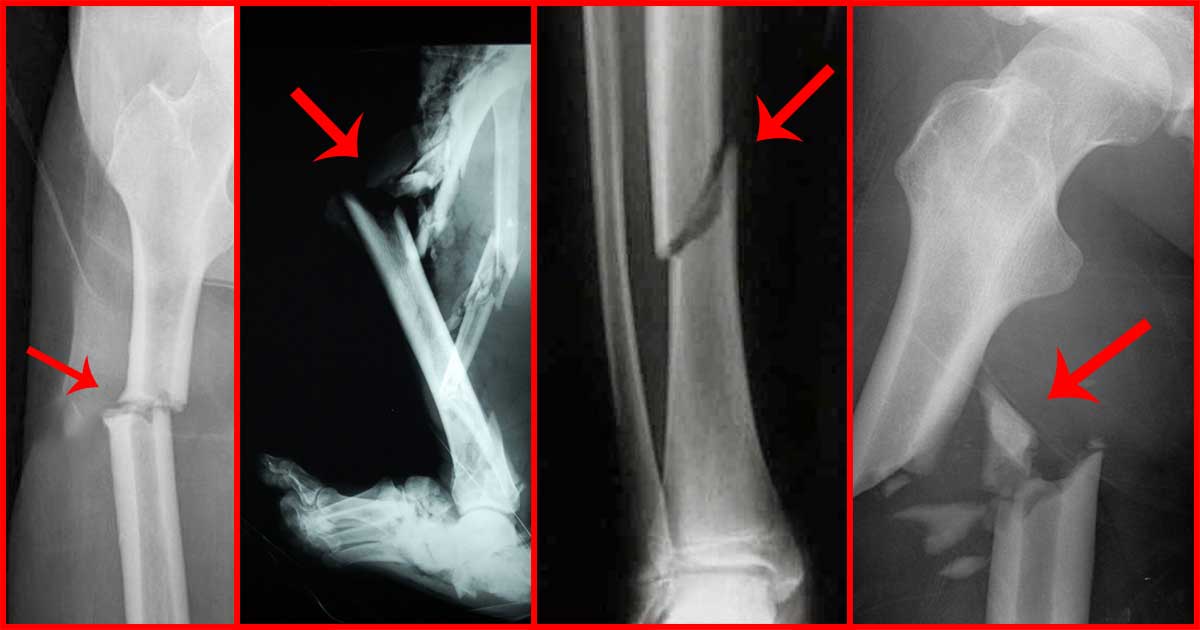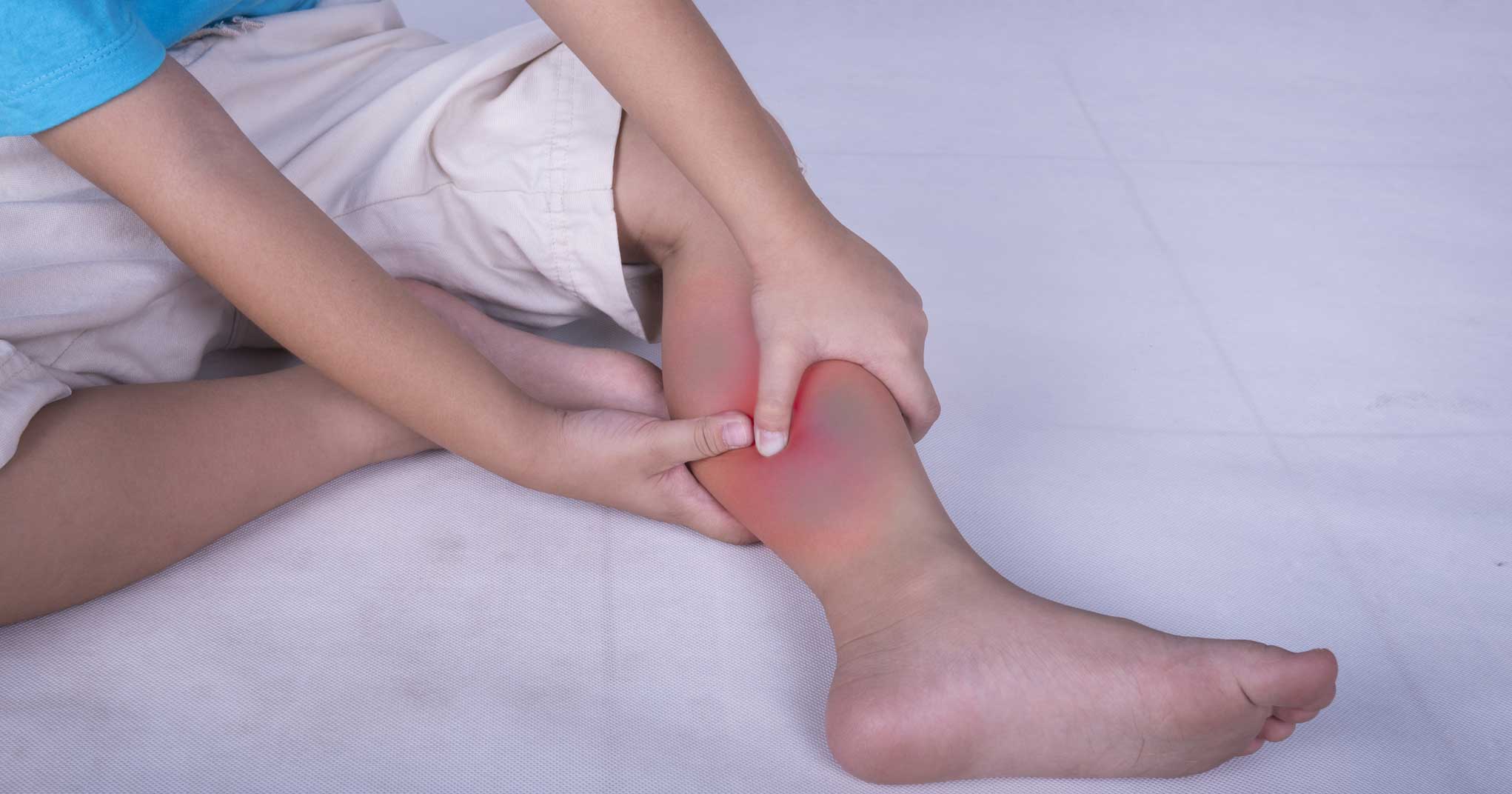How To Tell The Difference Between A Broken Bone And A Sprain
Sprains and broken bones often happen during physical activity, in fact, athletes are the most susceptible to these injuries. When an injury occurs, it can be difficult to determine if the bone has been broken, or if the wound is a sprain. Although they may seem similar because they are both very painful, in fact, they are very different; a sprain is considered to be less severe than a break or fracture and can be treated at home. There are certain factors to look for when attempting to figure out what exactly has happened under the skin.
The Facts

What exactly is the difference between a sprain and a break? Technically speaking, a sprain occurs when a ligament - the tissue that binds two bones together - is torn or stretched. Ligaments help to stabilize the body and protect the joints. A sprain also occurs when too much pressure is put on the joints, this overstretches the ligament and can cause them to rupture completely. When a break or fracture occurs, the bone is chipped, cracked, or completely broken in two or more places. Breaks should always be checked by a healthcare professional to ensure proper healing.
Breaks

A break or fracture happens when the bone is chipped, cracked, or broken; this creates trauma to the surrounding soft tissues in the affected area. Bones that are most likely to experience fractures are the clavicle, wrist bone, and the femur. The signs and symptoms of a break include intense pain, bleeding, hematoma (this looks like a bruise), swelling, and the inability to move the area. The best way to treat a break is to immobilize the entire injured area as this will help avoid more pain and any further complications that may arise. When a break is treated, the patient is told to rest the site of the injury and apply ice consistently. The limb must also be continuously elevated to avoid any restriction of blood flow.
Types of Breaks

There are several different types of breaks that can occur; the first is a simple break, which is characterized by the bone not breaking through the surrounding muscle tissue or skin. The next type is an exposed break, which leaves the bone protruding from the surrounding soft tissue and the surface of the skin. An oblique fracture is a break that is angled on the shaft of the bone while a comminuted fracture breaks the bone into small fragments. The last kind of break is called a spiral fracture, which occurs around the axis of the affected bone.
Sprains

A sprain occurs when the affected joint is twisted, which then injures the surrounding ligaments. These ligaments will suffer a rupture, either partially or completely. The symptoms of a sprain include hematoma (bruising), swelling, and being unable to move the injured area. Resting the affected area is crucial in treating a sprain, as well as applying a cold compress, but never directly on the skin. The skin must remain protected from the cold with a towel or cloth. A mild sprain will usually heal in ten days, while more severe sprains could require up to five weeks to properly heal.
Pain

Although it may seem like a fracture would be the most painful, that is typically not the case. The pain an individual experiences from a sprain and a break will feel almost the same, with one significant difference. In the case of a sprain, pain is felt around the bone in the muscle, ligaments, and soft tissue whereas breaks cause pain in the bone itself. In both sprains and fractures, there will be swelling, possible bruising and both problems will likely result in pain when pressure is applied to the injured area.
Treatment

Sprains should be treated by resting the injured area, applying ice, using compression, and elevating. The use of crutches is also necessary if the injury is in the legs or feet. Common sprains can heal in less than ten days whereas more severe cases require up to five weeks to completely recover. Most bone fractures can be treated with conservative methods like splinting - immobilizing the injured area first and creating a splint. Some of the more severe injuries could require surgery. Often, patients with a broken bone receive over-the-counter medication to manage their pain.
First Aid: The RICE Method

A general guideline to follow when treating an injury an injury is the RICE Method. First, the patient should Rest the part of the body that has sustained an injury, apply an Ice pack to help with any swelling and pain in the area. The next step is to use Compression in the form of a large bandage wrapped around the area or a cast - both of which can be purchased at a drugstore - and compressing the injury will help to stabilize it. Finally, Elevate the affected area. If, after two days the area is black and blue, it is recommended to seek immediate medical advice.
Athletic Risk

All types of exercise, even light activities like walking, come with the risk of getting a sprain. The areas of the body which are the most susceptible depends on what type of physical activity the body is engaging in. Sports like basketball, dance, gymnastics, soccer, football, and volleyball carry a higher risk of ankle, foot, and leg injuries because of all the jumping that occurs during play. Hockey, boxing, wrestling, soccer, and football also carry a risk of sprains because they are contact sports. Those who participate in sports that involve gripping, like tennis and gymnastics, have an increased risk of hand injuries.
Preventing Injury

There are many ways that an individual can condition the body and limit the risk of developing an injury. Building muscle strength with a conditioning program as well as stretching daily to increase flexibility and condition the muscles before and after playing sports are both prime examples. Wearing proper footwear as well as appropriate protective gear when participating in contact sports and other physical activities. Finally, eating a nutritious diet that is rich in vitamins and minerals will help build stronger muscles.
